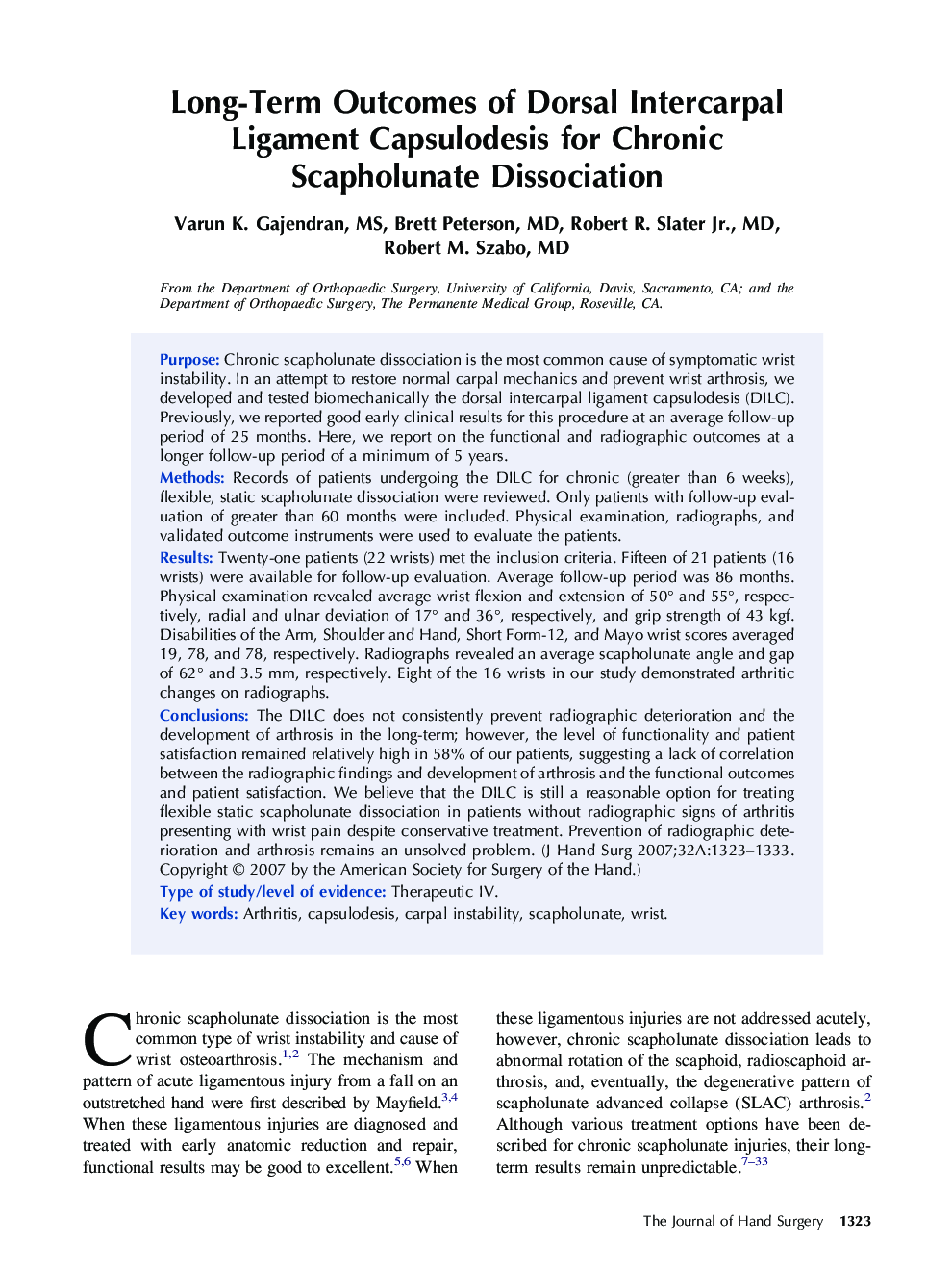| کد مقاله | کد نشریه | سال انتشار | مقاله انگلیسی | نسخه تمام متن |
|---|---|---|---|---|
| 4071024 | 1604449 | 2007 | 11 صفحه PDF | دانلود رایگان |

PurposeChronic scapholunate dissociation is the most common cause of symptomatic wrist instability. In an attempt to restore normal carpal mechanics and prevent wrist arthrosis, we developed and tested biomechanically the dorsal intercarpal ligament capsulodesis (DILC). Previously, we reported good early clinical results for this procedure at an average follow-up period of 25 months. Here, we report on the functional and radiographic outcomes at a longer follow-up period of a minimum of 5 years.MethodsRecords of patients undergoing the DILC for chronic (greater than 6 weeks), flexible, static scapholunate dissociation were reviewed. Only patients with follow-up evaluation of greater than 60 months were included. Physical examination, radiographs, and validated outcome instruments were used to evaluate the patients.ResultsTwenty-one patients (22 wrists) met the inclusion criteria. Fifteen of 21 patients (16 wrists) were available for follow-up evaluation. Average follow-up period was 86 months. Physical examination revealed average wrist flexion and extension of 50° and 55°, respectively, radial and ulnar deviation of 17° and 36°, respectively, and grip strength of 43 kgf. Disabilities of the Arm, Shoulder and Hand, Short Form-12, and Mayo wrist scores averaged 19, 78, and 78, respectively. Radiographs revealed an average scapholunate angle and gap of 62° and 3.5 mm, respectively. Eight of the 16 wrists in our study demonstrated arthritic changes on radiographs.ConclusionsThe DILC does not consistently prevent radiographic deterioration and the development of arthrosis in the long-term; however, the level of functionality and patient satisfaction remained relatively high in 58% of our patients, suggesting a lack of correlation between the radiographic findings and development of arthrosis and the functional outcomes and patient satisfaction. We believe that the DILC is still a reasonable option for treating flexible static scapholunate dissociation in patients without radiographic signs of arthritis presenting with wrist pain despite conservative treatment. Prevention of radiographic deterioration and arthrosis remains an unsolved problem.Type of study/level of evidenceTherapeutic IV.
Journal: The Journal of Hand Surgery - Volume 32, Issue 9, November 2007, Pages 1323–1333